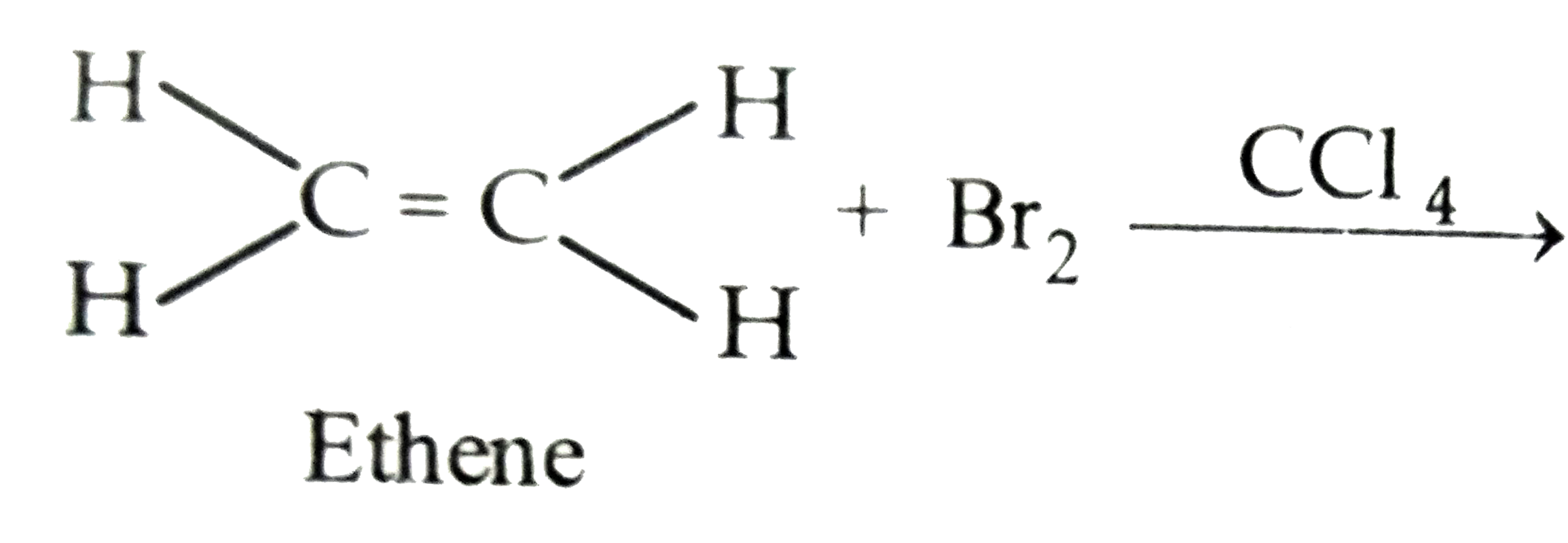Complete the following reactions.
(i) C6H5N2Cl+C6H5NH2Ice cold−−−−→pH4−5
(ii) C6H5N2Cl+H2Owarm−−→
To complete the reactions given in the question, we will analyze each reaction step by step.
Reaction (i):
Given: C6H5N2Cl+C6H5NH2 under conditions of pH 4-5 and ice cold.
1. Identify the Reactants:
- C6H5N2Cl is benzenediazonium chloride.
- C6H5NH2 is aniline.
2. Reaction Type:
- This is a coupling reaction where the diazonium salt reacts with an aromatic amine (aniline) to form a azo compound.
3. Mechanism:
- The diazonium ion C6H5N+2 reacts with the aniline C6H5NH2.
- The nitrogen gas N2 and chloride ion Cl− are eliminated.
- The product formed is C6H5N=N−C6H5 (azo compound).
4. Final Product:
- The final product is azobenzene C6H5N=N−C6H5.
Reaction (ii):
Given: C6H5N2Cl+H2O under warm conditions.
1. Identify the Reactants:
- Again, C6H5N2Cl is benzenediazonium chloride.
- The other reactant is water H2O.
2. Reaction Type:
- This is a hydrolysis reaction of the diazonium salt.
3. Mechanism:
- The diazonium ion C6H5N+2 reacts with water.
- The nitrogen gas N2 is released, and the chloride ion Cl− is also eliminated.
- The product formed is phenol C6H5OH.
4. Final Product:
- The final product is phenol C6H5OH.
Summary of Reactions:
1. (i) C6H5N2Cl+C6H5NH2 → azobenzene C6H5N=N−C6H5
2. (ii) C6H5N2Cl+H2O → phenol C6H5OH
Given: C6H5N2Cl+C6H5NH2 under conditions of pH 4-5 and ice cold.
- C6H5N2Cl is benzenediazonium chloride.
- C6H5NH2 is aniline.
- This is a coupling reaction where the diazonium salt reacts with an aromatic amine (aniline) to form a azo compound.
- The diazonium ion C6H5N+2 reacts with the aniline C6H5NH2.
- The nitrogen gas N2 and chloride ion Cl− are eliminated.
- The product formed is C6H5N=N−C6H5 (azo compound).
- The final product is azobenzene C6H5N=N−C6H5.
Given: C6H5N2Cl+H2O under warm conditions.
- Again, C6H5N2Cl is benzenediazonium chloride.
- The other reactant is water H2O.
- This is a hydrolysis reaction of the diazonium salt.
- The diazonium ion C6H5N+2 reacts with water.
- The nitrogen gas N2 is released, and the chloride ion Cl− is also eliminated.
- The product formed is phenol C6H5OH.
- The final product is phenol C6H5OH.
1. (i) C6H5N2Cl+C6H5NH2 → azobenzene C6H5N=N−C6H5
2. (ii) C6H5N2Cl+H2O → phenol C6H5OH
Topper's Solved these Questions
- ORGANIC COMPOUNDS CONTAINING NITROGENBOOK - PRADEEPCHAPTER - ORGANIC COMPOUNDS CONTAINING NITROGENEXERCISE - ADDITIONAL QUESTIONS (LONG ANSWER QUESTIONS)
7 Videos
- ORGANIC COMPOUNDS CONTAINING NITROGENBOOK - PRADEEPCHAPTER - ORGANIC COMPOUNDS CONTAINING NITROGENEXERCISE - HIGHER ORDER THINKING SKILLS (HOTS QUESTIONS)
7 Videos
- ORGANIC COMPOUNDS CONTAINING NITROGENBOOK - PRADEEPCHAPTER - ORGANIC COMPOUNDS CONTAINING NITROGENEXERCISE - ADDITIONAL QUESTIONS (VERY SHORT ANSWER QUESTIONS)
59 Videos
- HALOALKANES AND HALOARENESBOOK - PRADEEPCHAPTER - HALOALKANES AND HALOARENESEXERCISE - IMPORTANT QUESTIONS FOR BOARD EXAMINATION
22 Videos
- P-BLOCK ELEMENTS BOOK - PRADEEPCHAPTER - P-BLOCK ELEMENTS EXERCISE - IMPORTANT QUESTIONS FOR BOARD EXAMINATION
25 Videos
Similar Questions
Knowledge Check
Product of the following reaction is C6H5−N2Cl+C6H5−NH2→
A B
B C
C D
D
Complete the following equation:
(i). C6H5N2Cl+Ki→
(ii). H2C=CH2+Br2CCl4−−→
View SolutionC6H5CH2CH(Cl)C6H5KOH(alc.)−−−−−→Heat[A]
View SolutionComplete the following reactions :
(i) C6H5OH+CH3ClAnhyd.−−−−−−→AlCl3
(ii) C6H5OH+H2SO4373K−−→.
View SolutionComplete the following reaction equations :
(i) C6H5N2Cl+CH3COCl→
(ii) C2H5NH2+C6SO2Cl→
(iii) C2H5NH2+HNO2→
View SolutionComplete following reaction equation:
(i) C6H5N2Cl+KI→........

View Solution(a) Complete the following reactions:
(i) C6H5NH2+CHCl3+KOH(alc.)warm−−→
(ii) C6H5N2−Cl− Cu2Cl2,HCl−−−−−−−→
(b) Write coupling reaction.
View SolutionComplete the following reactions:
(i) C6H5NH2+CHCl3+alc.KOH→
(ii) C6H5N2Cl+H3PO2+H2O→
(iii) C6H5NH2+H2SO4(conc.)→
(iv) C6H5N2Cl+C2H5OH→
(v) C6H5NH2+Br2(aq)→
(vi) C6H5NH2+(CH3CO)2O→
(vii) C6H5N2Cl(1)HBF4−−−−−−−−−−−−→(ii)NaNO2/Cu,Δ
View Solution
